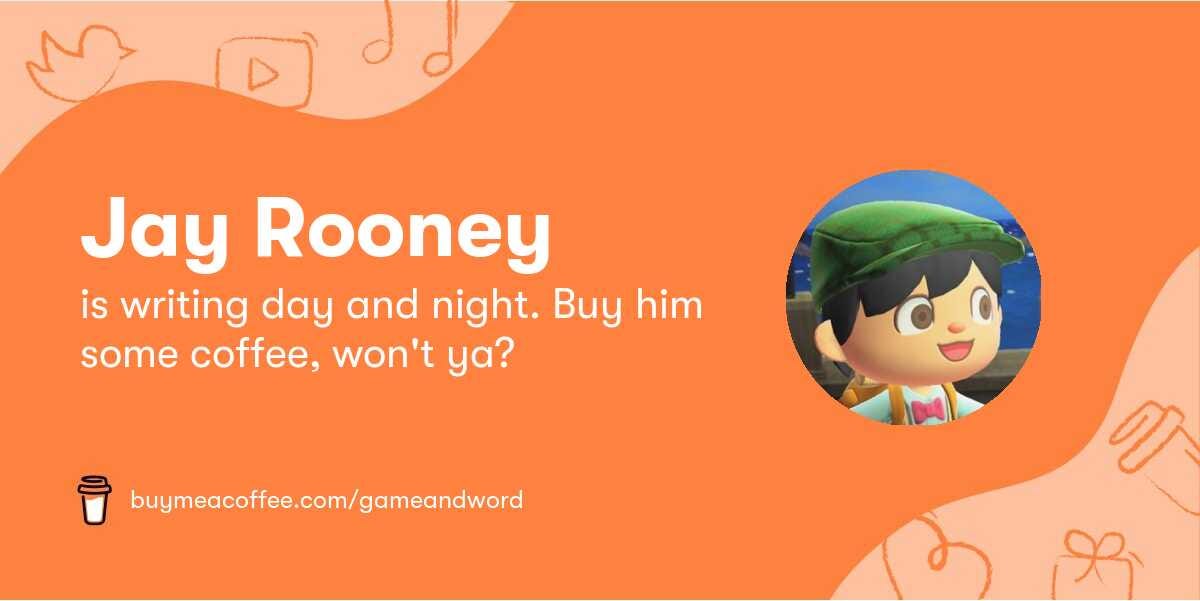Issue 3.6: Archetypal, My Dear Watson
A Primer on Jungian Archetypes and the Collective Unconscious in Video Games
Hello! If you enjoy Game & Word, please hit the “heart” button at the very top or very bottom of this post, or on the bottom-left corner of the Substack app. It helps more people find Game & Word, which helps us survive and grow!
NOTE: Gmail users, you might see a truncated version of this message. If this happens to you, just click the “View entire message” link next to where it says “[Message clipped]” to read the rest.
Game & Word Volume 3, Issue 6: Sunday, Jun. 19, 2022

Publisher: Jay Rooney
Author, Graphics, Research: Jay Rooney
Logo: Jarnest Media
Founding Members:
Le_Takas, from Luzern, Switzerland (Member since April 14, 2022)
Ela F., from San Diego, CA (Member since April 24, 2022)
Alexi F., from Chicago, IL (Member since May 13, 2022)
Elvira O., from Mexico City, Mexico (Member since May 18, 2022)
Special Thanks:
YOU, for reading this issue.
Table of Contents
Summary & Housekeeping
Feature: “Archetypal, My Dear Watson” (~20 minute read)
Food for Talk: Discussion Prompts
Further Reading
Game & Word-of-Mouth
Footnotes
Summary:
Today, we’ll dip our toes into the collective unconscious by taking a look at archetypes, what they represent, and why they’ve been such a fixture of humanity since we practically gained sentience. With this, we’ll be setting the ground for a deep dive into some of gaming’s best depictions of the collective unconscious.
Housekeeping:
We’ve heard from one of our giveaway winners, Nattend0, who just received her signed copy of The Psychology of Zelda—which, you might remember if you were around, she won in Game & Word’s first-ever book giveaway! This is one happy customer:



Once again: congratulations on winning the giveaway, Nattend0! And thank you for your ongoing readership and support of Game & Word. Everyone else: you can catch Nattend0 on Twitch, Twitter, and pretty much all the socials.
Also, sorry this issue isn’t as image-heavy—or as long—as previous issues. I just didn’t have enough time this week. 😞 Next issue, on the other hand, will be much more… dynamic. I promise! 😁
Previous Issues:
Volume 1 (The Name of the Game): Issue 1 ● Issue 2 ● Issue 3 ● Issue 4
Volume 2 (Yo Ho Ho, It’s a Gamer’s Life for Me): Issue 1 ● Issue 2 ● Issue 3 ● Bonus 1 ● Issue 4 ● Issue 5 ● Issue 6 ● Issue 7 ● Bonus 2 ● Issue 8 ● Bonus 3
Volume 3 (Game Over Matter): Intro ● Issue 1 ● Issue 2 ● Issue 3 ● Podcast 1 ● Issue 4 ● Video Podcast 1 ● Bonus 1 ● Issue 5 ● Podcast 2
Game & Word is a reader-supported publication. To support my work and keep this newsletter free and available to all, consider becoming a free or paid subscriber:
Or, you could help offset my caffeine costs by chipping in for the price of a cup of joe:
Feature: Archetypal, My Dear Watson
⏳📜✍️ Updates & Errata: ✍️📜⏳
UPDATE (6/21/22): Added images, including an archetype infographic, to provide some more visual flair to the piece.
CONTINUED FROM ISSUE 3.5
…
……
………
…………
I aM eVerYwHerE aNd NoWHerE. .eReHWoN dNA eRehWyREve Ma I
The Collective Unconscious
…Ok, maybe it’s time we get our bearings. What, exactly, is the collective unconscious, anyway?

As far as the mind is concerned, you can’t get much deeper than this. We’re way past the realm of dreams and imagination, and in the plane of archetypes and quantum bonds. This is the fount from which all human experience originates, and the endpoint of every human journey. To use a computer analogy, this is the kernel through which God (or the cosmos, or evolution, or whatever) interfaces with the operating system of the psyche.








